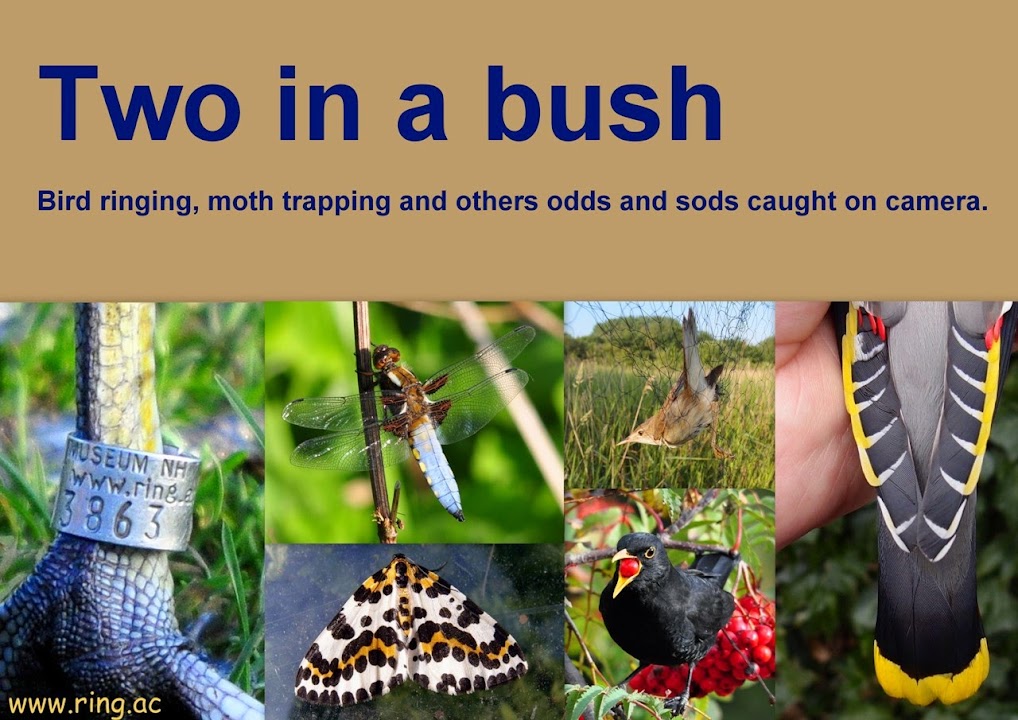I have managed to get out every morning recently and the results can be seen in the table below. Only 3 nets were deployed each time but there was some chopping and changing between the net rides used each day depending on the wind speed and direction and, just as importantly, the forecast cloud cover.
 |
| Retraps in brackets. |
Monitoring the movements of Tree Pipits at the site has been the main reason behind these daily visits with counts being as important as the numbers caught. There was a decent movement on the 25th when at least 18 went south; counts for the following days were 5+ (26th), 10 (27th), 5 (28th) and 1 (29th).
 |
| The 10 Tree Pipits ringed over the last 5 days brings the total ringed in August to 48. |
While the autumn passage of Tree Pipits usually extends from early August to late September, in this area, the bulk of migration takes place in the last 3 weeks of August and generally peaks in the 3rd week of the month. Many people think of Tree Pipits as being a September migrant but most will have left our shores by then.
Willow Warblers continued to outnumber Chiffchaffs during the period as a whole, only just, but that should change once we get into September. Both Chiffchaff and Blackcap have been present in relatively low numbers during August and there is no sign of that changing at present so it will be really interesting to see what happens with them next month.
On the other hand Goldcrests have been caught in higher numbers than usual and the 20 ringed over the last 5 days brings the total for the month to 36 which is more than double last August's total. If that is replicated in September and October then we could be in for another bumper Goldcrest autumn without any influx of birds from the continent.
 |
| Male Goldcrest |
 |
| Goldcrest |
Less usual captures over the period included 2 Tree Sparrows 25th, single Spotted Flycatchers 25th & 29th and a Redstart 29th. To put the capture of the 2 Spotted Flycatchers into context a check of the BTO online ringing reports revealed that only 3 were ringed in the whole of the recording area of Lancashire and North Merseyside in 2013 followed by 7 in 2014 and just 3 again in 2015, so a very infrequently ringed bird at a county level.
 |
| First year Spotted Flycatcher |
 |
| First year male Redstart |
Recent recoveries included a first year Willow Warbler ringed at Billinge on 6th August that was controlled 8 days later on the south coast at Durlston Country Park in Dorset. This site in Dorset saw some large arrivals of Willow Warblers in early August with the largest fall being on the 5th when 210 were ringed. Details of the ringing totals for Durlston Country Park can be found on the Trektellen website (
link here).
JTA193 Willow Warbler
Ringed 06/08/16 Billinge Hill, Merseyside
Controlled 14/08/16 Durlston Country Park, Dorset. 329 km S, duration 8 days.
b
Details were also received of a Siskin that was ringed in the garden in February and caught by a ringer in Drummond, Inverness, Highland in July.
S144547 Siskin
Ringed 25/02/16 near Orrell, Greater Manchester
Controlled 03/07/16 Drummond, Inverness, Highland. 448 km NW, duration 129 days.













































